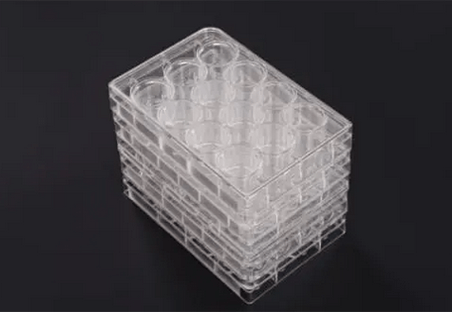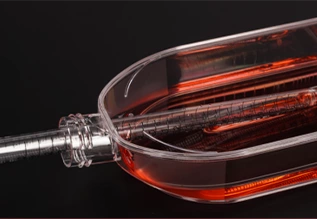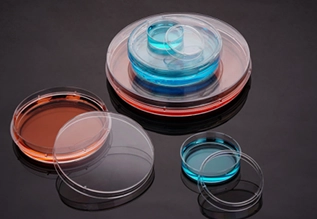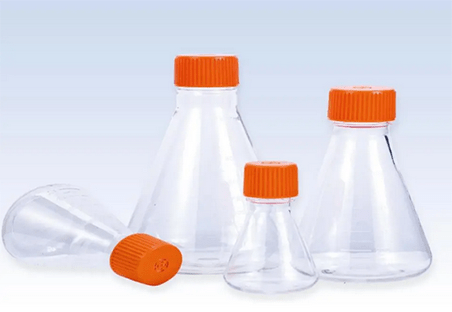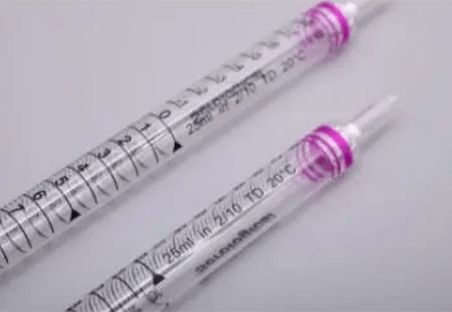A cell culture dish, also known as a Petri dish, is a kind of cell culture consumables. Cell culture dishes are essential tools in laboratory research because they allow researchers to cultivate and study different types of cells, which in turn leads to advances in biomedical science and medical innovation. But to stop the spread of potentially dangerous microbes, careful attention to safety precautions must be taken when disposing of these frequently contaminated cell culture dishes. This article outlines the proper procedures for disposing of cell culture dishes, ensuring the protection of laboratory personnel, the environment, and the integrity of research endeavors.

Before Disposal:
Identifying Contaminated Cells in Cell Culture Dishes
Microorganisms that can cause harm, including viruses, bacteria, and fungi, can reside in contaminated cells. If these pathogens are not handled and disposed of properly, they can spread to other cultures, equipment, and even laboratory workers. Inaccurate results in experiments can be caused by contaminated cells. For instance, an experiment measuring bacterial growth will yield skewed results if the culture is contaminated with bacteria. The spread of infection can be stopped and appropriate disposal made possible by identifying contaminated cells. Additionally, it guarantees that only hygienic cultures are employed in studies, protecting the validity of the findings.
- Look at How It Looks
It is a simple, fast method that doesn’t require any specialized tools to perform. A range of peculiar growth patterns, color shifts, or biofilm formation can be seen in contaminated cells. These indicators are easily visible through a magnifying glass or with the unaided eye.
- Assess the Morphology
It’s an easy test that can be completed quickly and easily without the need for specialized equipment. Under a microscope, examine the cells to look for any abnormalities in their morphology, such as enlarged or misshapen cells or the presence of cellular debris. Numerous contaminants, including bacteria, viruses, and fungi, can be identified with it. It can be applied to identify contamination at an early stage before the cells proliferate and diffuse throughout the culture.
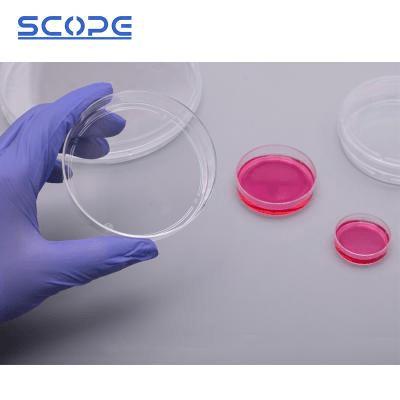
Pre-Disposal Handling of Cell Culture Dishes Disposal
When discarding cell culture dishes, pre-disposal handling is required to reduce the possibility of cross-contamination and shield lab staff from potentially hazardous microorganisms. If cell culture dishes are not disposed of properly, the microorganisms they contain could cause infections. You can lessen the chance that these microorganisms will infect other lab personnel or other areas of the facility by adhering to pre-disposal handling protocols.
- Gloves and Apron
Wearing gloves shields your hands from potentially hazardous substances or microorganisms when handling cell culture media. They assist in keeping you from unintentionally contaminating the dishes again and help stop the spread of microorganisms from the contaminated dishes to your skin. Your clothing and the contaminated cell culture dishes are kept apart by an apron. It helps shield your clothing from media spills and splashes that could contaminate it, limiting the possibility of microorganisms spreading to other parts of the lab or possibly onto you.
- Sharps Disposal
Needlestick injuries from sharp objects can result in serious health issues, such as infection. Contaminated sharps can also spread germs and endanger lab workers as well as the surrounding area.
During Disposal:
Disposal Methods of Cell Culture Dishes
If handled and disposed of improperly, potentially dangerous microorganisms found in cell culture dishes can lead to infections or illnesses. Chemical disinfection or autoclaving are two appropriate disposal techniques that guarantee these microorganisms are destroyed and cannot endanger laboratory personnel. Researchers show their dedication to responsible and ethical scientific practices by minimizing environmental risks, protecting laboratory personnel’s health, and following regulations.
- Autoclaving
Since autoclaving is a very effective and efficient way to kill microorganisms, it is the recommended method for sterilizing contaminated cell culture dishes. The process of autoclaving involves subjecting the dishes to extreme heat and pressure, which breaks down the microorganisms’ cell walls and membranes and prevents them from proliferating.
- Chemical Disinfection
Killing germs with chemicals is a quick and simple method. Multiple pathogens, such as bacteria, viruses, and fungi, can infect cell culture dishes. These pathogens can be swiftly and efficiently eliminated with chemical disinfectants. Additionally, it works with a range of materials. Metal, glass, and plastic are just a few of the materials that can be used to create cell culture dishes. While some chemical disinfectants are compatible with all of these materials, others might only work with specific ones.
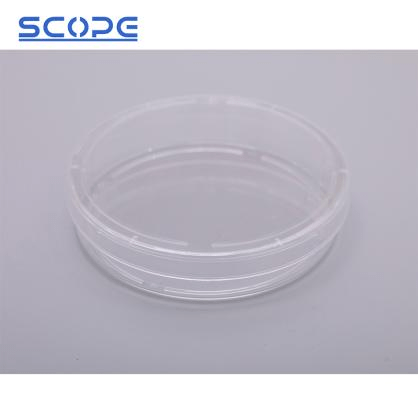
After Disposal:
Waste Disposal Guidelines
Hazardous biological materials such as viruses, microorganisms, and toxic chemicals can be found in cell culture dishes. Certain cell culture dishes might have radioactive or dangerous substances in them. Improper disposal of these materials may cause environmental damage and the spread of infection. Dishes used for cell culture might contain microorganisms from earlier studies. Improper disposal of these dishes may result in the contamination of individuals or other experiments.
- Regular Monitoring
When waste containers are overfilled, there’s a greater chance of spills and accidents occurring because the weight of the waste can tip the container over or cause the lid to pop off, exposing lab workers to potentially dangerous materials. By ensuring that waste containers are emptied before they fill up, routine monitoring helps to prevent this. Laboratory workers’ health and safety as well as the environment are at risk from hazardous waste, such as tainted cell culture dishes. Frequent monitoring reduces the amount of time this waste is left in the laboratory and the chance of exposure by enabling its prompt removal.
- Labeling
Mark all trash cans with the relevant biohazard symbols and the waste’s contents. When discarding cell culture dishes, labeling is an essential safety precaution that helps to guarantee that waste is handled and disposed of properly. Laboratory staff can effectively identify and handle potentially hazardous materials by clearly labeling all waste containers with the appropriate biohazard symbols and the contents of the waste.
Conclusion
It is not just a formality to know how to properly dispose of cell culture dishes; it is a vital procedure that protects the environment, keeps lab workers safe, and upholds the integrity of scientific research. Research and scientific knowledge are advanced through safe and responsible laboratory environments that are fostered by adhering to proper disposal procedures. If you want to know more, professional lab consumable supplier Chongqing Scope Instrument Co., Ltd. can provide you with additional guides.
